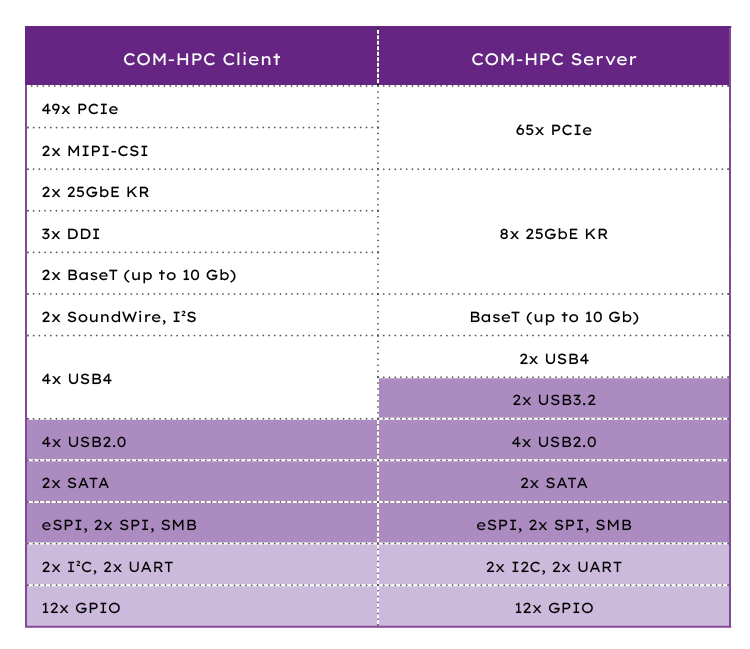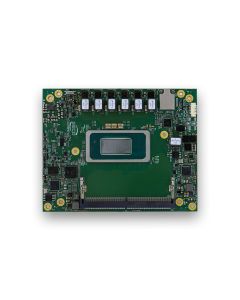
COM-HPC Standard
COM-HPC® is based on a new pair of 400-pin connectors - twice as many as the standard COM Express™ connector - which link the standard computing module to the specific carrier board, where these new extremely high-frequency buses can run without compromising signal integrity.
It is important to point out that this new standard does not replace the COM Express™ Type 6 and 7, but is an extension of the modular concept to families of high-performance computer processors.
The new COM-HPC® standard includes two macro-families of modules:
- The “Client” version is embedded, and in terms of features and performance represents the natural evolution of the COM Express™ Type 6. Available in three different form factors (Size A: 3.74 x 4.72 in; Size B: 4.72 x 4.72 in; Size C: 6.3 x 4.72 in), it supports CPUs up to a maximum TDP of 65W, up to 49 PCI lines Gen 4/5, 4 graphic interfaces, and 2 x 25 Gb ethernet.
- The “Server” version, on the other hand, with a networking focus and broadband Ethernet, is the evolution of the COM Express™ Type 7. Available in two different form factors (Size D: 6.3 x 6.3 in; Size E: 7.87 x 6.3 in), it is a headless module that supports computing performance with a maximum TDP of 125W, up to 65 PCI Express Gen4/5, and 8x 25 Gb Ethernet.

-
 SOM-COM-HPC-A-MTLCOM-HPC® Size A Client Module with Intel® Core™ Ultra Processors Family (codename: Meteor Lake -H and -U)
SOM-COM-HPC-A-MTLCOM-HPC® Size A Client Module with Intel® Core™ Ultra Processors Family (codename: Meteor Lake -H and -U)

